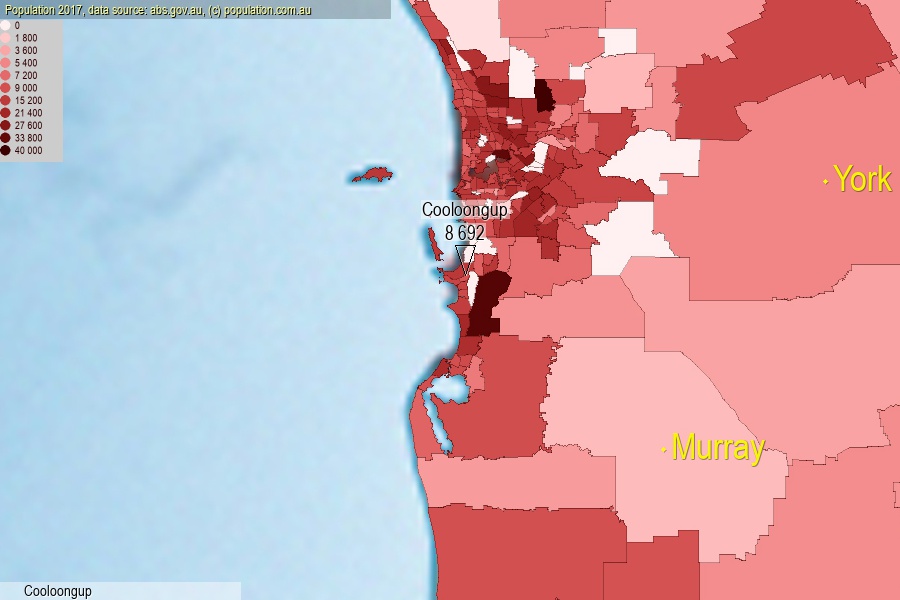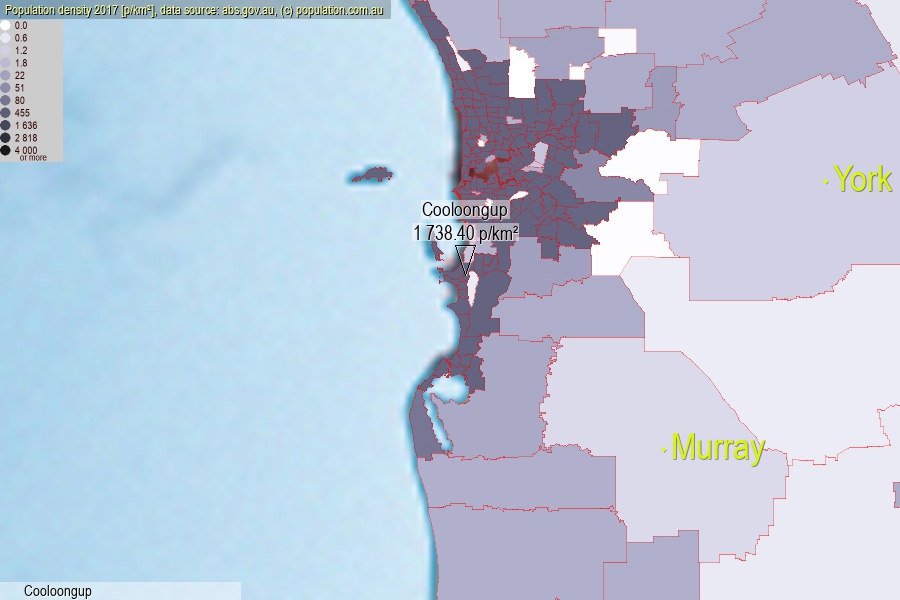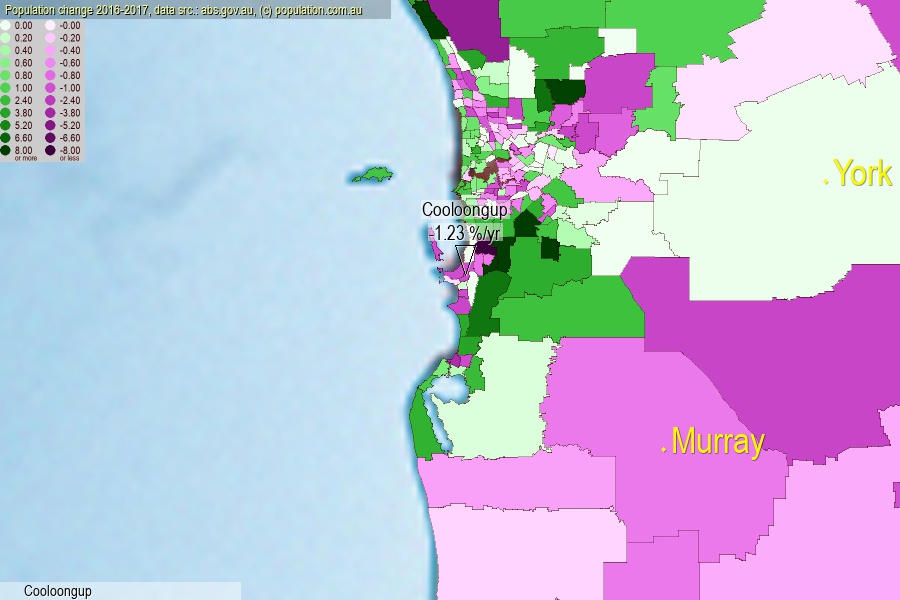 population.com.au
population.com.auLast official estimated population of Cooloongup (as Statistical Area Level 2) was 8 692 people (on 2017-06-30)[2]. This was 0.04% of total Australian population and 0.335% of WA population. Area of Cooloongup is 5.00 km², in this year population density was 1 738.40 p/km² . If population growth rate would be same as in period 2016-2017 (-1.23%/yr), Cooloongup population in 2025 would be 7 874. [0]



Click to enlarge. Cooloongup is located in the center of the images.
Population [people], population density [p./km²] and population change [%/year] [2]
View borders » (new window) [4]
[1991-1992] +0.15 %/Yr.
[1992-1993] +0.71 %/Yr.
[1993-1994] +1.20 %/Yr.
[1994-1995] +1.35 %/Yr.
[1995-1996] +0.02 %/Yr.
[1996-1997] +0.14 %/Yr.
[1997-1998] -0.40 %/Yr.
[1998-1999] -0.51 %/Yr.
[1999-2000] -0.40 %/Yr.
[2000-2001] -0.95 %/Yr.
[2001-2002] -2.58 %/Yr.
[2002-2003] -1.69 %/Yr.
[2003-2004] -1.11 %/Yr.
[2004-2005] -1.80 %/Yr.
[2005-2006] -1.73 %/Yr.
[2006-2007] -0.19 %/Yr.
[2007-2008] -0.01 %/Yr.
[2008-2009] +0.27 %/Yr.
[2009-2010] -0.17 %/Yr.
[2010-2011] +0.91 %/Yr.
[2011-2012] +0.88 %/Yr.
[2012-2013] +0.50 %/Yr.
[2013-2014] -0.37 %/Yr.
[2014-2015] -1.35 %/Yr.
[2015-2016] -2.73 %/Yr.
[2016-2017] -1.23 %/Yr.
[0] Calculated with linear interpolation from officially estimated population
[1] Read more about SA2 and Australian Statistical Geography Standard (ASGS) on abs.gov.au
[2] Population data from Australian Bureau of Statistics (Population and density: 2017; change: 2016-2017)
[3] Digital Boundaries: Australian Statistical Geography Standard (ASGS) 2016.
[4] Border coordinates are simplifyed using Ramer-Douglas-Peucker algorithm.